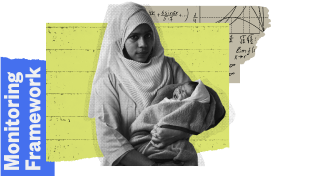
 11,281,880
Total Population
11,281,880
Total Population
A dispute exists between the Governments of Argentina and the United Kingdom of Great Britain and Northern Ireland concerning sovereignty over the Falkland Islands (Malvinas).
The boundaries and names shown and the designations used on this map do not imply official endorsement or acceptance by the United Nations.
dominican republic’s Population dynamics Data


Total Fertility Rate (births per woman)
Adolescent (15-19 years) Birth Rate (births per 1,000 girls)
Maternal Mortality Ratio (Per 100,000 live births)
DOMINICAN REPUBLIC’S NATIONAL COMMITMENT
At the Nairobi Summit, the Dominican Republic committed to promote the recognition and effective realization of sexual rights and reproductive rights as human rights. This includes strengthening the response to maternal mortality, unsafe abortions, teenage pregnancies, STIs and HIV.
Unmet need for family planning
In the Dominican Republic, unmet need for family planning is slightly higher in urban than rural areas. It is highest among women with no or pre-primary education, and women living in the poorest households.
The maternal mortality ratio in the Dominican Republic remained largely the same from 2000 to 2017,
the latest year for which data is available, the year in which it was estimated to be 95 deaths per 100,000 live births, one of the lowest in the region.
23.7% of women aged 20-24 years in the Dominican Republic gave birth before age 18, and 3.1% gave birth before age 15 – both of which are one of the highest in the region.
Most births occur among women who have only primary education, and those women in the poorest households. Births before age 18 among women with primary education was eight times higher than for women with higher education; they were also nearly six times higher among women living in the poorest households compared to those living in the wealthiest households.
The Dominican Republic’s adolescent birth rate decreased from 1990 to 2020.
The adolescent birth rate is 1.7 times higher in rural areas than in urban areas, and is five times higher among girls with primary education than those with higher education, and among girls in the poorest households compared with those in the wealthiest households.
Employment trends among women remained relatively the same from 2001 to 2016, however they are approximately half of the employment rates of men.
Young people who are not in education, employment or training (i.e., the NEET population) quantifies the proportion of young people who find themselves outside of the educational system and without work. In the Dominican Republic, the percentage of youth not in education, employment or training has been increasing among men and women, with the percentage among women being higher than for men.
Significant challenges prevail in terms of gender inequality and the empowerment of women, with gender-based violence indicators at worrying levels and cases having increased 122% between 2015 and 2019. According to the Economic Commission for Latin America and the Caribbean (ECLAC), the country is one of the countries in the region with the highest incidence of femicides.
The Dominican Republic explicitly committed to incorporate the mainstreaming of the equality approach in the national health system in the performance of the essential functions, including financing, regulation and provision of individual and collective health services as part of its ICPD25 commitments. To support advancing on this commitment a national study on ethnic and racial self-perception, vis- à-vis actions developed by the Dominican government in favor of Afro-descendant populations and a mapping of organizations, movements and practices related to Afro-descendants in the country have been taken forward.
Since the Nairobi Summit, young people have been mobilized to review and share their reflections on the progress of the implementation of the ICPD Programme of Action and the Montevideo Consensus. The three zeros have been advocated through the preparation of the National Plan for the Prevention of Teenage Pregnancy, the plan for reducing violence against women and girls, and the law for the prevention, care, punishment and eradication of violence against women.











































